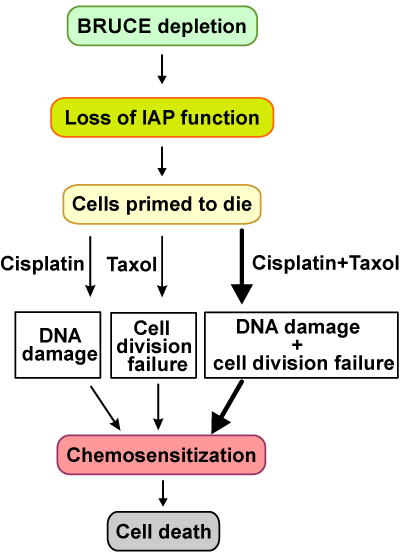
 |
| Figure 4: A working model for how BRUCE depletion sensitizes breast cancer cells to chemotherapy. Contribution of BRUCE to the chemoresistance in breast cancers comes from BRUCE functions in antiapoptosis, pro-cytokinesis, and DNA repair. Depletion of BRUCE results in loss of its IAP function and therefore cells are primed to the cytotoxicity of chemotherapy. BRUCE is also required for cell division and DNA damage repair. When BRUCE depletion is coupled to the cell division blocker taxol or DNA damage inducer cisplatin, the overall degree of cell viability reduces (thin arrows). Moreover, once the two pathways of cell division and DNA repair are hit simultaneously by the dual drug treatment, the chemotherapeutic treatments elicit a more profound impairment of cell viability in the already primed cells depleted of BRUCE (thick arrow). |